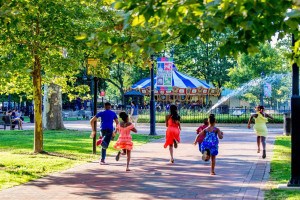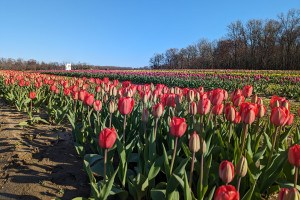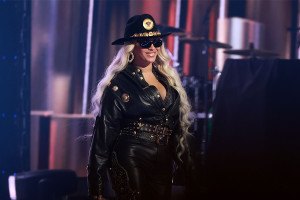Our Chat With Mimi Stillman, the Coolest Flute-Player in Philly

Mimi Stillman
Mimi Stillman started playing flute when she was six years old after her mother, an amateur clarinetist, taught her how to play the recorder (remember those from elementary school?) and read music.
“I had fallen in love with the sound of the flute from being taken to concerts, hanging out at my brother’s youth orchestra rehearsals, and recordings, and told my parents I wanted to play it,” she recalls. This lead to Stillman studying at the New England Conservatory Preparatory School growing up in Boston, where she played youth orchestra and chamber ensembles from the time she was 9. At 12, she was the youngest wind player ever accepted into the prestigious Curtis Institute of Music, where she graduated with her Bachelor’s degree in music by the time she was 17.
Stillman is now considered one of the world’s most celebrated concert flutists; she has performed around the globe, and has received much acclaim for her work, including the 2012 Women in the Arts Award from Women for Greater Philadelphia.
However, Stillman recently reached another milestone: her Dolce Suono Ensemble (DSE), widely regarded as a pioneering and innovative chamber music group, celebrated their 10th anniversary. What’s remarkable about the ensemble’s work is just how varied the musical styling is: At their Anniversary concert in early October, which took place at Curtis, the packed house was treated to not only the works of Handel and Schubert, but a ragtime set and a rendition of the ever popular Libertango.
We had the chance to sit down with Stillman to discuss the Ensemble, her work as an artist, and the future of Philadelphia’s music culture.
I know everyone at the 10th anniversary concert was somehow connected to Curtis in one way or the other. It’s sort of remarkable to know such an esteemed institution is in our backyard, but most Philadelphians have no real concept of just how amazing it is. In your own words and experience, what does Curtis mean to you?
We all happened to be musicians from Curtis at this concert, but not all DSE artists are Curtis alumni. I founded Dolce Suono Ensemble (DSE) in 2005 to make music with my friends, many of whom are fellow Curtis alumni. Others are drawn from The Philadelphia Orchestra, Temple University, the University of Pennsylvania, and other leading musical institutions, and all enjoy distinguished careers in their own right.
I consider Curtis my musical home. The legendary flutist Julius Baker brought me to study with him, and I also studied with Jeffrey Khaner, principal flute of The Philadelphia Orchestra. I was very fortunate to grow up in the nurturing environment of Curtis, receiving the training, experience, and opportunity I needed to help me realize my artistic potential. I met lifelong friends and colleagues there.
Today, I am on the faculty of Curtis Summerfest, I serve on the Alumni Council, as well as make music with many artists from the Curtis community. Dolce Suono Ensemble will perform for Curtis Presents on April 12, 2015, and last season we recorded George Crumb’s Vox Balaenae (Voice of the Whale) for Curtis Performs.
The music the ensemble play is so varied. That’s what amazed me during the show. How do you describe the style you aim for?
One of Dolce Suono Ensemble’s trademarks is diverse repertoire spanning the Baroque to new music. Our active commissioning program led to 32 premieres in 9 seasons. Our programs are built around themes informed by my dual background in music and history (I did my MA in history at the University of Pennsylvania, where I am ABD for the PhD). The themes are sometimes historical or drawn from other art forms such as visual art or literature, our goal being to set the music in its broadest cultural context. Because I am a flutist and much, though not all, of our repertoire includes flute in combination with other winds, strings, piano, percussion, harp, guitar, and voice, we explore a wide variety of musical styles. In addition to works from the classical canon, we perform a lot of Latin and world music (Piazzolla, Brazilian choros, Sephardic songs) and early jazz, such as Jelly Roll Morton rags.
Gabriel Globus-Hoenich, the percussionist who performed at your 10th Anniversary Concert, gave an extremely moving speech at the performance about what the ensemble meant to him, both professionally and personally. I could tell the entire group had a lot of that passion. What is it like to manifest that?
Gabriel Globus-Hoenich is a wonderful percussionist, committed educator, and great friend and collaborator. He expressed the passion for making music together that we in the ensemble share. I have always wanted DSE to embody the spirit of chamber music, which is an intensely intimate form of musical communication among the artists and between the artists and the audience. Many of us have been performing together since DSE’s inception in 2005, and even before from our student days at Curtis. We bring dynamism and spontaneity to the music and a spirit of friendship to our collaboration, which audiences tell us engage them. You also develop a lot of history with people you play with regularly, like my duo pianist Charles Abramovic, with whom I’ve been performing for 13 years. We have played concerts in Philadelphia, New York, Chicago, Washington, DC, Baltimore, San Diego, and many more places as well as recorded several CDs.
There are so many horror stories about music education being slashed in our school systems. What role do you think music plays in a child’s life and why do you think it’s important?
Music education and other disciplines that bring us closer to the great works and ideas of humanity are tremendously important. I see music, especially chamber music, as a valuable way for children to learn life skills: discipline, teamwork, leadership, listening to others. I also think music must be taught in conjunction with academic disciplines, like history, literature, foreign languages, math, science. Because children are often not exposed to great music either in school or at home, I made music outreach and community engagement a cornerstone of DSE. We do educational outreach partnerships with Philadelphia Public Schools and programs, and last season launched our “Música en tus Manos” (“Music in Your Hands”) engagement initiative with the Latino community of Philadelphia. We were honored to win the Knight Arts Challenge 2013 for this project, in which we partner with organizations in the Latino community to bring chamber music to Spanish speakers of all ages. We offer “petting zoos,” in which people get to try instruments under our guidance. I speak Spanish and am thrilled to be able to engage this community at bilingual events.
Who have you yet to collaborate with that you are dying to work with?
I’ve been very fortunate to have performed with so many musical greats: Sir Simon Rattle, Kurt Masur, Wolfgang Sawallisch, Julius Baker, Paquito D’Rivera, Curtis friends Eric Owens and Juan Diego Flórez, Lucy Shelton, and many more.
There are many artists with whom I would love to work, but as a historian, my imagination leads me to think about great moments in music history that I would have liked to have experienced: the premieres of Debussy’s Prélude a l’après-midi d’un faune and Stravinsky’s Le sacre du printemps. I would love to have worked with artists such as Renata Tebaldi, Janet Baker, the trio of Thibaud, Cortot, and Casals, and many more.


